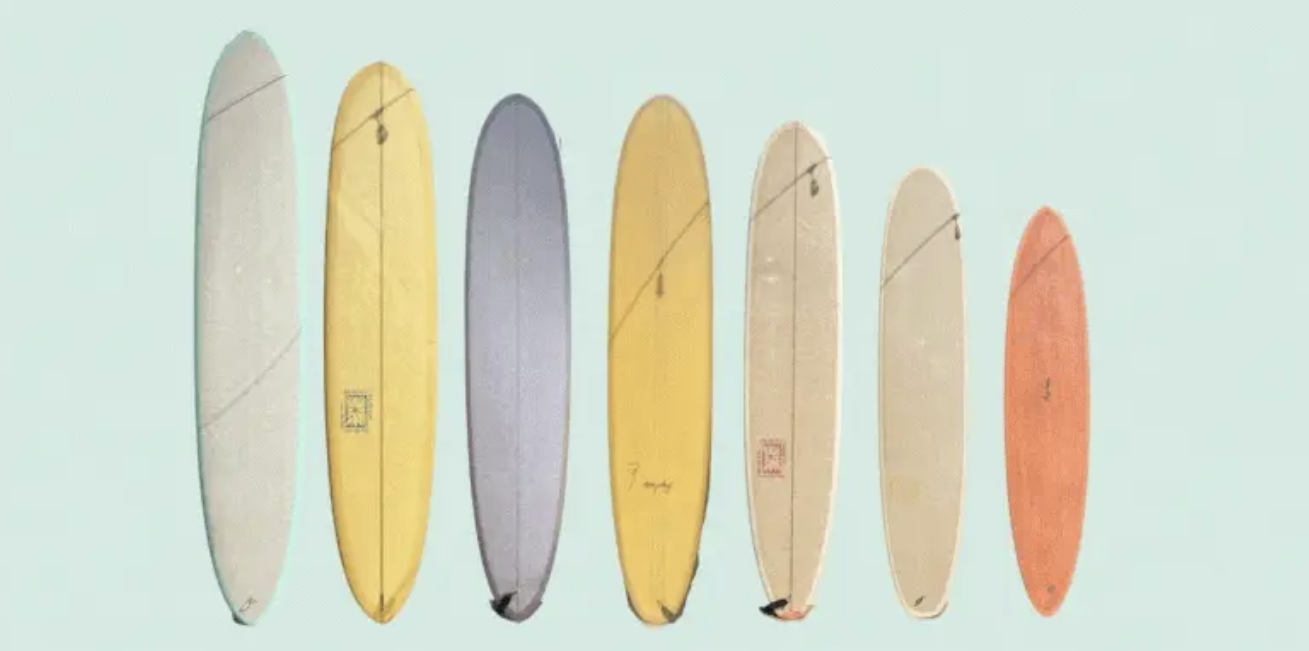(Bloomberg Businessweek) —
At Linda Mar Beach, south of San Francisco, an old-school surf shop sits in a commercial strip that fronts a mile-long crescent of sand. The windows are plastered with the logos of big brands, while inside skateboard-toting teenage boys and grizzled older surfers roam the aisles. The store’s website divides merchandise between “dudes” and “chicks.”
Next door, the Traveler Surf Club & Coastal Outpost offers an ambience that’s more boutique than bro. It’s a bright, airy space with hot showers, gathering places and lockers for storing surfboards. The gear for sale can also be hard to find in traditional surf shops: Wetsuits from companies such as Vissla and Kassia+Surf are petrochemical-free and made from limestone neoprene and recycled materials. Some of the surfboards are certified as Ecoboards, meaning they’re constructed from nontoxic and sustainable components.
“We try to find brands that are made in the US, use recycled materials and have a strong environmental mission,” co-owner Julie Cox, a former pro longboarder with a degree in environmental studies, tells me when we meet at Traveler’s new Malibu, California, outpost.
Cox and her wife, Rel Lavizzo-Mourey, who has a background in design and brand strategy, opened the first Traveler in 2016. The chain, along with many of the brands it features, is part of a growing movement to make surfing more sustainable.
Despite its one-with-nature aura, modern surfing is fossil-fueled. Traditional surfboards are shaped from slabs of petroleum-derived polyurethane that’s covered in fiberglass and sealed with toxic resin. Other accessories—leashes, wax, board bags—are also made from environmentally harmful materials. (In California, petroleum-based wetsuits carry a state warning that “this product can expose you to chemicals” known to cause cancer.) Factor in travel, and the carbon footprint of surfing swells.
Read Next: Why the Disappearance of Kelp Worries This Surf Champion
After years of slowly gaining acceptance, environmentally friendly alternatives are finally reaching a mainstream market. More than 250 surfboard makers have received an Ecoboard certification, developed by California nonprofit Sustainable Surf, and Ecoboard sales topped 50,000 last year. Big surf brands such as Firewire Surfboards LLC and Patagonia Inc. now sell boards and wetsuits made from natural materials, while Rip Curl Inc. was certified in March as a B Corp, meaning it meets verified standards for environmental sustainability.
Apparel makers are also getting wise: Outerknown LLC sells board shorts made from recycled water bottles, and Kassia+Surf, in addition to making new wetsuits, recycles old ones into yoga mats. The movement to green surfing is still small, but as the sport diversifies—and climate concerns grow—it’s picking up steam.
At Traveler, eco-friendly options include boards from Santa Cruz, California-based Ashley Lloyd Surfboards, which use recyclable foam cores and replace fiberglass with flaxseed cloth coated with a nontoxic bio-resin. Lloyd, also a former pro surfer, grew up surfing with Cox in Malibu.
Despite their novel components, Ecoboards are mostly indistinguishable from traditional surfboards in appearance and performance. Jordy Smith, Michel Bourez and other pro surfers have won high-profile contests riding them.Play Video
My own path to more sustainable surfing progresses one piece of equipment at a time.
One of my surfboards is made from redwood salvaged from old California barns; another skips toxic fiberglass in favor of New Zealand sheep wool coated in a bio-resin. The carry bags for my boards are made from recycled materials—Los Angeles billboards, to be exact—and my airline travel bag is made from hemp. The leashes that attach my leg to the board are recycled plastic, and the surfboard wax to keep my feet on the deck is nontoxic and biodegradable—as is my sunscreen.
My “Deep Blue Bag” surf backpack was constructed from recycled sails and wetsuits and was created by industrial designer Yves Béhar, a surfer I sometimes see in the lineup at my favorite break.
Sustainable Surf founders Michael Stewart and Kevin Whilden say the green movement is taking the sport back to its ancient Hawaiian roots, when surfers rode wooden boards and lived more ecologically harmonious lives. “Sustainability has not been inherent in learning how to surf, but it is the authentic story of surfing,” Stewart says.
Covid-19 also gave the trend an unexpected boost. When pandemic lockdowns shuttered gyms, millions more people took up surfing, a socially distanced sport that offered a physical and psychological respite from isolation. From 2020 to 2022, 1.4 million people began surfing in the US, according to data compiled by the Center for Surf Research at San Diego State University. Joining lineups that had long been predominantly White and male were many more women, people of color and members of the LGBTQ+ community. In Australia, the number of women surfing surged 76%.
“Statistically, new surfers are significantly more concerned about sustainability than people who have been surfing for a longer period of time,” says Jess Ponting, founder and director of the Center for Surf Research and an associate professor at San Diego State University. “And they’re better able to take action on that concern, given the wider availability of sustainable surfboards and wetsuits and certified sustainable surfing resorts.”
Traveler’s Linda Mar location reflects surfing’s changing demographics. Hundreds of surfers gathered there in 2020 as part of a worldwide “paddle out” to honor George Floyd, and such groups as Brown Girl Surf, City Surf Project and Queer Surf organize meetups and surf lessons at the beach for those who previously felt unwelcome on the waves.
“You definitely see lots of different faces in the lineup now, and we want to be a place where different types of people feel comfortable coming in,” says Lavizzo-Mourey.
During the pandemic, Traveler expanded to Santa Cruz and Ventura, and in May it moved its Malibu outpost to a larger location. That shop is a short walk from iconic Surfrider Beach, where on a misty June morning scented with sea lavender, surfers jogged down a trail, boards tucked under their arms, toward pumping waves.
Outside the back door of the Malibu location is a row of 11 electric car chargers, eight of them Tesla Superchargers. It’s a reminder that unless surfers are lucky enough to live within walking or cycling distance of the beach (or own an electric car), the sport’s biggest climate sin is the driving and, sometimes, the flying required to get to the best waves.
Those looking for a more environmentally friendly trip seek out surf resorts that are Stoke-certified ( Sustainable Tourism and Outdoors Kit for Evaluation). The standard, co-developed by Ponting, evaluates surf tourism according to 140 metrics, from water and energy use to worker wages and respect for local culture. Surfers can also pay penance for air travel by donating to initiatives such as Sustainable Surf’s SeaTrees project, which plants mangroves around the world to sequester carbon dioxide and protect coastlines from increasingly severe climate-driven storms.
At its various outposts, Traveler is biting off at least some of the travel problem: The shop offers customers surfboard lockers and beach cruiser bicycles equipped with board racks, both geared to reducing the carbon footprint of simply getting from your house to the beach.
“Folks can leave their boards with us and then drive a smaller, more eco-friendly car or electric car here,” Cox says. “You don’t need to have a big gas-guzzler truck like a lot of surfers have to carry all their gear.”
To contact the author of this story:
Todd Woody in San Francisco at twoody4@bloomberg.net
© 2023 Bloomberg L.P.





